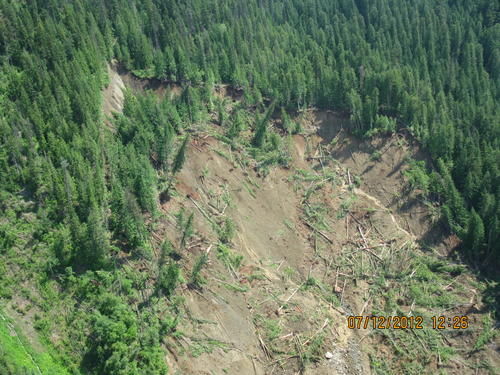25 September 2012
An update on the Johnsons Landing landslide in Canada
Posted by Dave Petley
The Johnsons Landing landslide in BC, Canada back in July killed four people and was the subject of some remarkable video footage. An investigation is now underway of the future stability of the site; an update was released in the last few days. The Nelson Star reports that:
“After a geotechnical team visited Johnsons Landing this month, experts have more insight into what led to the slide and what is going on at the site. While it may take months for the team to release their findings as to the cause, geomorphologist Peter Jordan said there is a large unstable area remaining near the source. “There is an area that could conceivably slide again in the future,” said Jordan about the unstable area. “That doesn’t mean that it will slide, it just means that it is possible.”
This mirrors the post I made I earlier this week in which I highlighted the difficulties of assessing the risks associated with partially deformed slopes. I will return to this issue again later in the week with a specific example from New Zealand. This finding should not be a surprise – footage at the time showed what appears to be a stalled block in the landslide source area, although I would guess that the material referred to above is in addition this:
Meanwhile, the Nelson Star has also carried a really interesting article about the challenges facing the community of Johnsons Landing in the aftermath of the landslide, and in particular with the assessment of future risks. Unfortunately, determining the likely future sliding potential, and the path that any failure might take down the meeting, is complex and time-consuming. Clearly it is not safe to reoccupy the land until this has been completed, but the residents are left in a very difficult position as a result. This is one of the key issues that remains in Christchurch, New Zealand, where there zonation of rockfall hazard continues to generate huge controversy. There are no easy answers to these problems, but the risks do need to be assessed properly.



 Dave Petley is the Vice-Chancellor of the University of Hull in the United Kingdom. His blog provides commentary and analysis of landslide events occurring worldwide, including the landslides themselves, latest research, and conferences and meetings.
Dave Petley is the Vice-Chancellor of the University of Hull in the United Kingdom. His blog provides commentary and analysis of landslide events occurring worldwide, including the landslides themselves, latest research, and conferences and meetings.